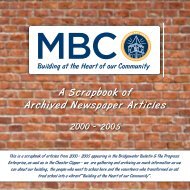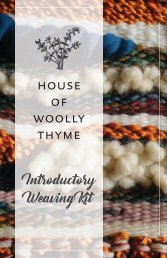You also want an ePaper? Increase the reach of your titles
YUMPU automatically turns print PDFs into web optimized ePapers that Google loves.
Chapter Two:<br />
The <strong>School</strong>’s ‘Founding Fathers’<br />
‘Conviction without action has no meaning’- John le Carre<br />
1914 was a time of local self-help. Not like the time of writing, when the provincial<br />
Department of Education approves <strong>and</strong> largely finances new school<br />
construction, appoints the architect, <strong>and</strong> sets the specifications.<br />
To build the New <strong>School</strong> of 1914, required local leadership <strong>and</strong> financing.<br />
There needed to be men [emancipation for women was still embryonic: they<br />
did not yet have the vote at Provincial <strong>and</strong> Federal elections. There were few<br />
women in public office] with imagination, determination, salesmanship <strong>and</strong><br />
ambition. What was wanted, was men of action who set goals <strong>and</strong> followed<br />
through. Those men, introduced in Chapter 1, were, in alphabetical order:<br />
Charlie Begin<br />
Sailmaker,<br />
William [“Pumpey”] F. Joudrey Owner of the large<br />
Livery Stables<br />
Charlie Lohnes<br />
Municipal Councilor,<br />
Butcher <strong>and</strong> Politician<br />
Had they been able to attend the big school reunion in 2000 they would have<br />
deserved a st<strong>and</strong>ing ovation.<br />
<strong>School</strong> Trustees<br />
<strong>School</strong> Section 26 They Made It happen<br />
They were the elected <strong>School</strong> Trustees for 1912, 1913 <strong>and</strong> 1914. They made it<br />
happen. What was their ‘empire’?<br />
• <strong>Mahone</strong> was a village, part of the Municipality of Lunenburg. Citizens elected<br />
county councilors. There was no incorporated town, mayor or town council,<br />
police or fire chief. But all that was to be changed in 1919.<br />
• <strong>Mahone</strong> <strong>Bay</strong> was recognized by the provincial educational authorities as<br />
<strong>School</strong> Section 26, District of Lunenburg <strong>and</strong> New Dublin-the ‘New Dublin’<br />
term, even then, was an archaic hang-over from an earlier time. The District<br />
[Nova Scotia had 33] had a Board of District <strong>School</strong> Commissioners.<br />
• The Section was<br />
1 the self-governing school territory administered by a board of three trustees<br />
serving three years,<br />
2 one of whom was elected in the place of the retiring trustee at the annual<br />
meeting of the ratepayers-who vote supplies to be levied on the section.<br />
The three ‘Founding Fathers’ were the risk-takers <strong>and</strong> the leaders. As trustees<br />
they were responsible for signing off on each of the bonds: the income from<br />
which built the new school. Their signatures are clearly visible.<br />
Can you imagine going to neighbours <strong>and</strong> business folk <strong>and</strong> persuading them<br />
to invest their savings <strong>and</strong> earnings in the local school! That’s how public<br />
utilities [water <strong>and</strong> sewer; power <strong>and</strong> light; transportation etc] were financed<br />
in the early twentieth century.<br />
3 The <strong>Mahone</strong> ratepayers paid the major costs of local education, except for<br />
teacher salaries. In his 1912-13 Annual Report to the Legislature, the Superintendent<br />
of Education pointed out that:<br />
‘Sectional Assessment denotes the amount voted for by the ratepayers of a school<br />
section…The sectional assessment is the main support of the school, amounting<br />
on average to about twice the provincial <strong>and</strong> municipal combined.’<br />
*The bold print is this writer’s emphasis.<br />
4 The annual meeting was required to approve by vote the school year report,<br />
audited accounts <strong>and</strong> budget [which fixed the education rate], as well as to<br />
elect a trustee.<br />
• The Inspector of <strong>School</strong>s for Lunenburg <strong>and</strong> Queen’s County [Division No.<br />
2] was H.H. MacIntosh . The Inspector was appointed by the provincial department<br />
of education as a supervisor <strong>and</strong> watchdog. He was secretary to the<br />
Board of District Commissioners <strong>and</strong> made an annual report that was part of<br />
the Annual Report of the Superintendent of Education to the Provincial Legislature<br />
[these reports are available at the Provincial Archives].<br />
23





